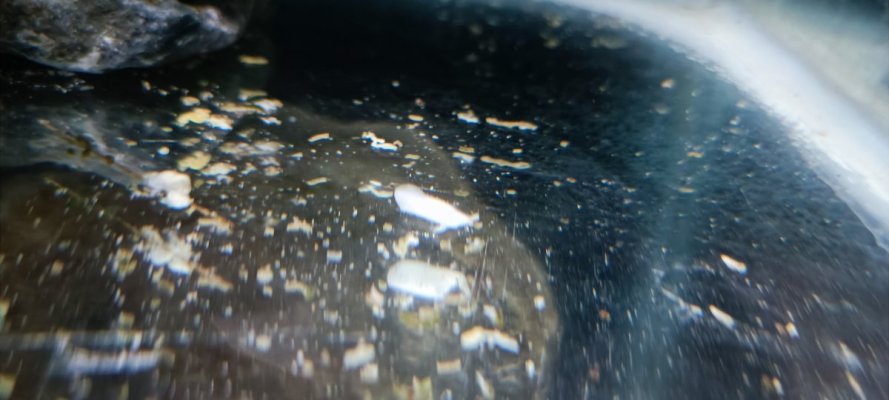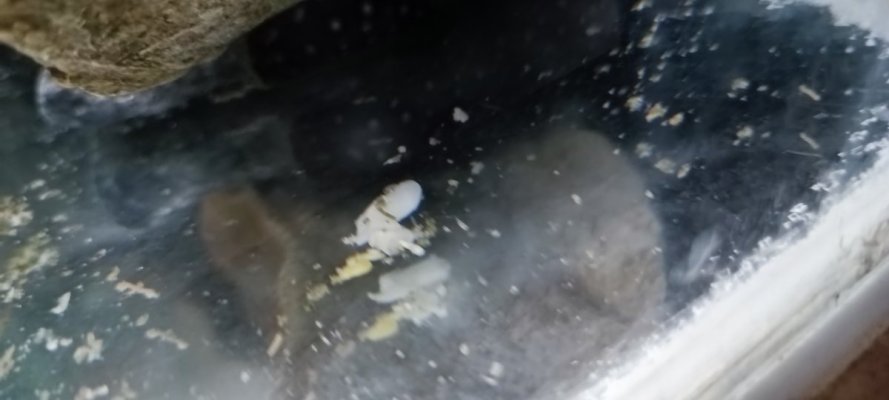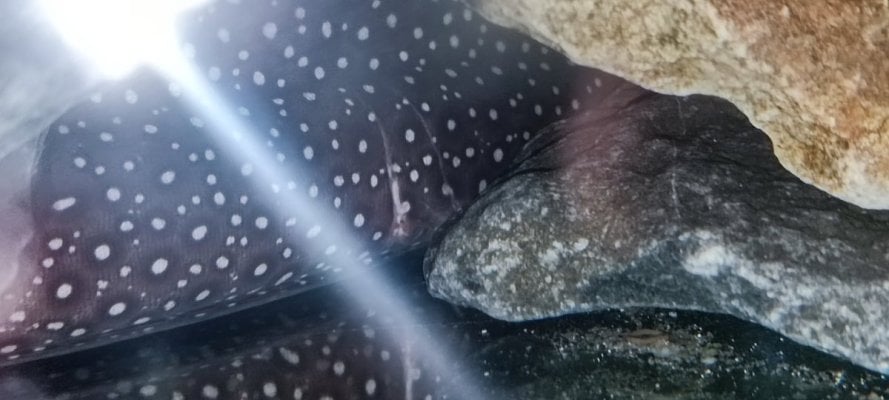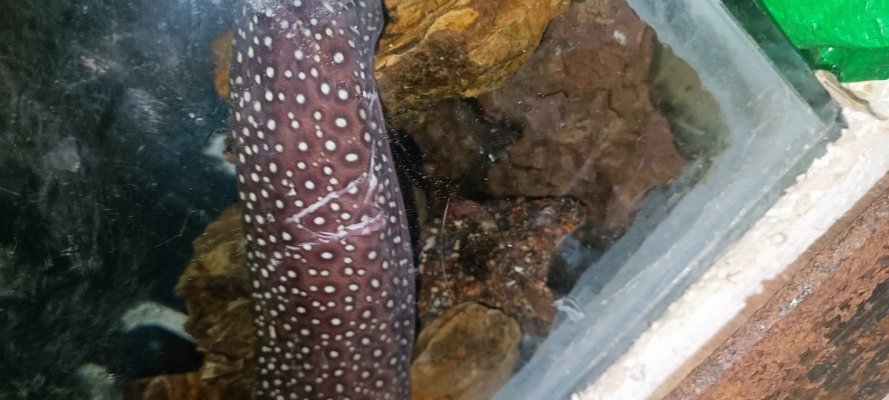It all started from i tried to introduce my eel to my tess and it didn't work out and the tess bit him now he's healing but it's been about 5 to 6 days since he's not eating I figured that it may be because of that introduction but I am also worried that he may have internal parasites I took a look at his poop and they look white like plastic I am also treating him with metronidazole tablets about 1 gram per 20 gallons the tablets don't contain any excipients besides ponceau 4r as a colour coating but I just wash off the colour coating before adding it to the tank I tried to find praziquantel but I can't find it nor is it available near my area. Heres the picture of the poop because I just wanted to confirm if he does have parasites I also tried to feed him live mollies but he wouldn't eat so now they are just swimming around the tank Lol it's the bigger white ones






















